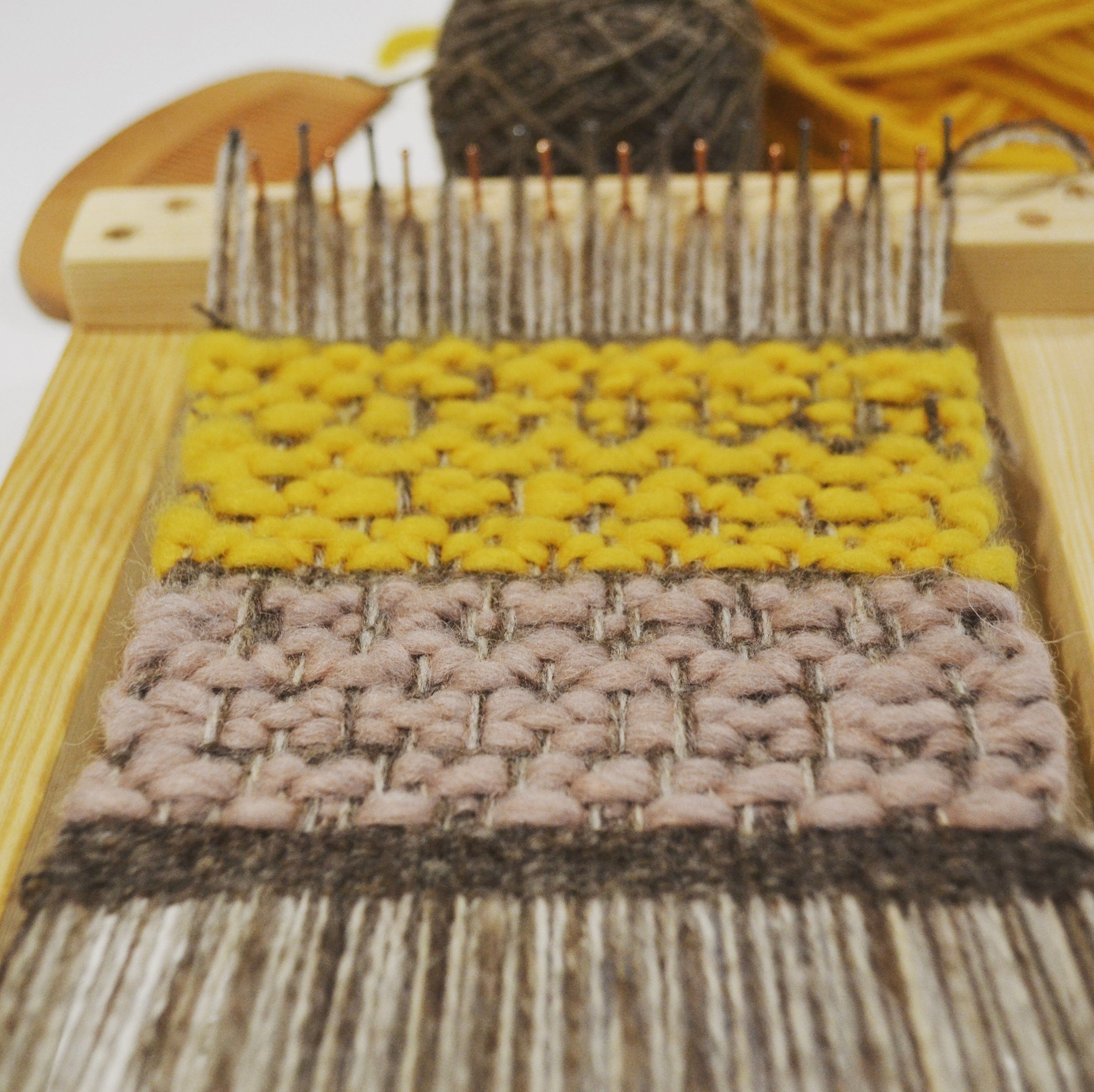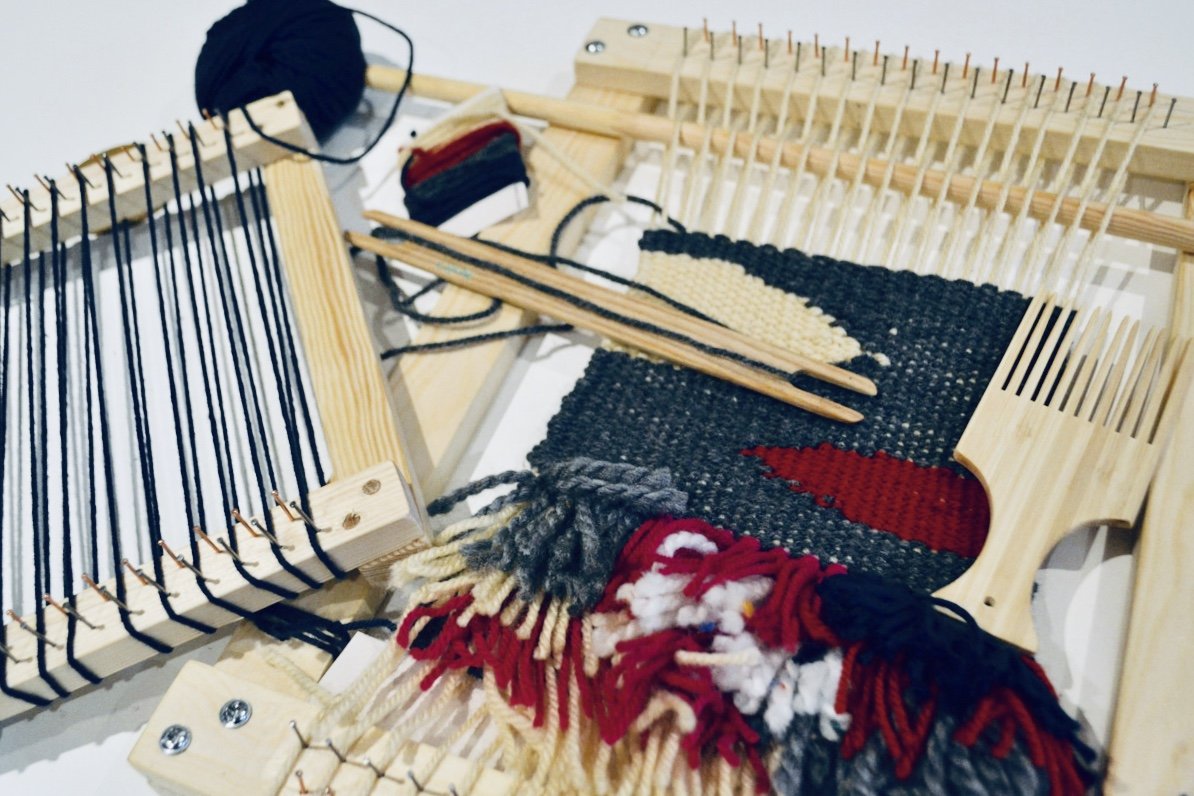
Weaving workshop
You will learn how to set up the warp on the loom, weave a few simple stitches and fringe the wool to finish off- experimental to use of colour and texture is encouraged.
You will learn how to set up the warp on the loom, weave a few simple stitches and fringe the wool to finish off- experimental to use of colour and texture is encouraged.

Stone seals have been used in East Asia for thousands of years, similar to wax seals used in Europe, they are used as a decorative signature to seal letters and sign artwork.
In this workshop you can choose your own Tenkoku moji (letter) and carve it into small square stone. The seal will last forever and will be one of a kind.

At this two hours workshop running over the Easter holidays you can create your own stamp with Japanese katakana writing and a crane mobile with Origami paper.
All materials and healthy break time snacks/drinks are included. (No Nuts)
Nao graduated with a Masters in Arts and Crafts course from Okinawa Prefectural Arts and Crafts University in Japan and is a fully qualified art teacher in Japan. She has 15 years’ experience as an art and workshop tutor in the UK and Japan.
Nao is based at her studio at Farnham Maltings from where she runs workshops.
Follow my Instagram and website
https://www.naofukumoto.com/
naofukumoto_textile
Please book with,
A hanko (判子), also known as an inkan (印鑑), is a small carved stamp or seal. All adults in Japan own an individual hanko which shows their full name or family name which is used as a way of signing documents or contracts with ink; it is not common to use a signature.
Hanko can be made from various materials like plastic, wood or even ivory. Stone seals have been used in East Asia for thousands of years; similar to wax seals used in Europe, they were a decorative way to seal letters and sign artwork. In the past, their use in Japan was limited to a very few people; the emperor, shoguns, court officials, and other important people would have used seals on official documents.
After the Meiji Restoration in the 19th Century, hanko became part of daily life after a law was passed requiring ordinary people them on important documents. Nowadays, Japanese may have 2 seals: a custom-made one used for formal documents, and another that is used in more casual situations.